Lava rocks in the flower bed?
I recall reading that many of you use lime stone abd white rocks don't work well. I just bought some lava rocks and am hoping someone has had experience with them in a bed of roses. Hubby & I both grew up out west & thought we ciukd incorporate them while matching our trim. Any suggestions or recommendations regarding these?
Comments (41)
hoovb zone 9 sunset 23
10 years agolast modified: 9 years agoThey get mixed up in the soil and then you have soil full of rocks. Is that what you want to end up with?
roseseek
10 years agolast modified: 9 years agoThat and it depends upon how intense your sun and heat are. Descanso Gardens used lava rock as the mulch in Dr. Lammert's Rose History Walk. It cooked the roots of the plants. It killed some and stunted MANY. All of that was corrected when The Guild remodeled the gardens into their current form. But, lava rock is a solar collector. They are excellent around cactus which require aridity and heat to flourish. Roses aren't cacti. Use anything which collects, holds, reflects and radiates heat efficiently in anything other than a cold climate where they benefit from the increased solar radiation and you can easily cook them.
If the heat where you are isn't enough off walls, drives, patios and concrete walks to burn foliage and stress the plants, you might be able to accomplish what you want with the lava rocks, but you will likely end up with rocky soil as hoovb stated. If you live where that kind of heat occurs, save the lava rocks for spots you want nothing but cacti to grow well in.There are good reasons why that kind of stones are used in barbecues. Kim
Related Professionals
Barrington Hills Landscape Architects & Landscape Designers · Maple Heights Landscape Architects & Landscape Designers · Aberdeen Landscape Contractors · Berwyn Landscape Contractors · Dickinson Landscape Contractors · Eagle Landscape Contractors · Fairhope Landscape Contractors · Fort Hunt Landscape Contractors · Fort Worth Landscape Contractors · Miller Place Landscape Contractors · Mission Landscape Contractors · Nanuet Landscape Contractors · Pompton Lakes Landscape Contractors · Red Oak Landscape Contractors · Chicago Ridge Landscape Contractorspat_bamaz7
10 years agolast modified: 9 years agoI have lava rock in the space between the concrete around my pool and the pool fence. They look nice contrasting with the white fence and the concrete, but aren't as effective at keeping the weeds down in that area as we had hoped...not much better than mulch would be, but they don't have to be replaced and they don't wash into the pool. It was never my intention to plant anything there, though...everything is in pots around the pool except for two palms. Weeds and volunteer flowers do pop up in the area all the time, and it is difficult to work around the rock to weed and to dig up the volunteers to move them. You pretty much have to move the rock and then move it back. Also would be uncomfortable to walk on or kneel/sit in to work in a bed of any size...the area I have them in is very narrow, so I don't have to get up in them to weed. I wouldn't want them in big beds where I had to do any major gardening. They do get somewhat hot in the summer sun, too. I don't know if the heat from the rocks would hinder the roses...sure doesn't seem to bother the weeds...lol. Advantages would be that the look is nice and you don't have to replace them like mulch, but you don't get the added benefit of the mulch breaking down and helping the soil, either.
pat_bamaz7
10 years agolast modified: 9 years agoI didn't see roseseek's response before I posted mine...guess we have the answer on whether the rock would hinder the roses now...thanks!
growing_rene2
Original Author10 years agolast modified: 9 years agoThank you all for the responses! I might be doing a very bad thing here: I am laying plastic sheeting down to prevent mixture,.after I added a little limestone and iron to my soil. this area gets avout 5 hours of sun, that's the sunny portion of it. right now it is 1pm and my memorial day rose has yet to see the sun. I may be changing this up a bit. I am posting a picture of a possibly.disastrous beginning. Again, thank you!
sunflowersrus222
10 years agolast modified: 9 years agoJMHO but I would only put down plastic if I wanted to KILL off something growing under it. The heat will be trapped under that plastic and cook off anything under it including the roots. I know you have cut outs for your roses but those roots are still going to spread out and be under that plastic and cook. There is a gardening fabric that I used to use that was pretty good at keeping out weeds but it was still a pain to work with. I still had to put mulch over the top of it to hide that black gardening fabric. It was not pretty without it.
roseseek
10 years agolast modified: 9 years agoYou don't want the plastic sheeting around plants. It prevents water from percolating through the soil and accomplishing the oxygen-carbon dioxide exchange. The roots, just like the foliage, "exhale" carbon dioxide and "inhale" oxygen. You would benefit from a porous material like a weed cloth under and around the tree and roses so the water can get into the soil to drive out the CO2 and draw in the oxygen. Trying to accomplish this with just the holes cut for the plants also limits to you only applying fertilizers right at the plant crowns where it CAN hurt the plant if it's too concentrated or too much is applied. Their feeder roots are going to be out around their drip zones, where the water falls off the foliage. That is where you want the fertilizers so they can be more readily absorbed. All fertilizers require moisture or actual water to be absorbed by the roots. Those holes in the plastic encourage the roots to proliferate in that small area, which will stunt the plants and inhibit their growth, performance and potentially their eventual life expectancy. The farther they can spread and deeper they can grow, the larger, more heat and cold resistant and drought tolerant they can become.
I don't know about any heat where you are, but the oxygen, fertilizer and water are definite potential issues. Kim
susan4952
10 years agolast modified: 9 years agoThis looks like spider mite heaven. I would pull the rocks all the way back from the stems; at least to the drip line. Cut back the plastic sheeting also. Then fill the drip line with bark mulch.
growing_rene2
Original Author10 years agolast modified: 9 years agook. so I was thinking, which gets me in to trouble, can I put many holes in the sheeting, about a 3 ft radius, surrounding the roses? I know this is not the preferred method, but when I just mulch & pull weeds (as I did on the south side) I quickly was overwhelmed with weeds. I want to seriously prevent the same circumstance here. :(
rocks will be away from stems!pat_bamaz7
10 years agolast modified: 9 years agoI have weed cloth under the lava rock around my pool. It worked pretty well the first couple of years, but it gets less and less effective over time. Dirt finds a way to get on top of it, and I have to weed it frequently. I don't plant in that area or I would never have put the weed cloth or lava rock down. I add to and move things around in my beds too often...it would be a nightmare for me to try to deal with weed mat and rock in a flower bed. If you know your bed is going to stay as you plant it initially and you allow enough space around the roses to be free of the cloth and rocks, it may be worthwhile for you.
growing_rene2
Original Author10 years agolast modified: 9 years agoThat does look nice! I have never used a weed killer, or prevention...I have been too afraid I would harm my desired plants. That is certainly an option, is there anything you can safely apply to kill weeds, but not the roses...I have children & pets too.
susan4952
10 years agolast modified: 9 years agoYes, weeds do find their way to the dirt that migrates into the rock area. Doesn't it seem that they need just a tiny bit of dirt to grow? I move things around, too. Digging in rock is NO fun, but I have limited space so I use this method. It has worked really well for me for a long time. There is maintenance involved but not nearly as much as my bark mulch beds. About 90 percent of my roses are in the rock surround areas. My basic rocks are marble chips.
nippstress - zone 5 Nebraska
10 years agolast modified: 9 years agoJust to add to the growing cautionary note about this method, I think both the black plastic and the river rock will cause you no end of grief in the long run if you plan to plant anything in this bed. I speak from experience, since the people who had my house before me did the exact same method around the entire front and side of the house - black plastic underneath red/black river rock. The one and only place where it sort of works is underneath the yew shrubs in the front that have never been disturbed, but being someone like me that wants to plant something interesting in front of the yews even there the river rock is nasty about getting into the planting areas ahead of it where I don't want it.
Here's the sequence of progression as I found it in my yard, for what it's worth. Initially, the black plastic does retard some of the weeds, but as other posters have mentioned it also kills good soil microorganisms, probably the earthworms, and creates a nasty white fungus under the plastic that smells. Any of the roses that want to extend their roots horizontally along the shallow soil risk having them fried by the hot plastic and rocks.
Unfortunately, then the black plastic starts to deteriorate, both from age and from the wear and tear of me digging into it elsewhere. That's when things start to be a real nightmare. The weeds are popping up everywhere from every possible hole or weakness in the plastic, and since the river rock creates a barrier to me as the gardener, the weeds are actually protected by the rocks and much harder to dig out. As soon as I DO dig them out, river rock tumbles out of my control into the hole I've created from that weed. Now that hole is even more conducive to weeds and less easy for me to plant or sustain anything else I really want, because a few inches below the layer of soil, I'm starting to have a layer of impenetrable river rock.
The process of deterioration is particularly bad in my west side bed along my garage, where I ripped out the boring junipers they'd had to put in roses. It should have been an ideal bed for roses, being mostly sunny and protected between houses. Instead, it has been a never-ending source of frustration. I cleared off as much of the river rock as I could before I started, but there had already been considerable settling of the river rock into the soil before we moved in. As soon as I dug any hole for anything, there were nasty panels of black plastic to claw out from under soil and rock, and the river rock I couldn't remove always, always settled to the bottom of whatever hole I dig, even though I tried to add organics on top of the rock and supplement the soil with compost and some manure. It's heavier than the soil so you simply can't keep it out of the hole with your hands or any other method I can find. Digging a hole in that bed is still a nightmare to this day, since everywhere I stick a shovel I get that nasty "chunk" sound of hitting river rock 4-6" down, and I'd say the bed is no more than half rock - half semi-decent soil after 6 years of cleaning and amending. Every hole I dig in that bed, I bring along one 5 gallon pot to hold the actual soil I want to replace back in the hole, and two 5-gallon pots to haul away yet more of the river rock that I someday dream of never seeing again.
Once the river rock settles and the plastic starts to deteriorate, it'll never be gone, I fear. My neighbors to the west had a 6'X8' bed covered in river rock that they later repented and tried to remove. Six years later, after sifting through the soil every year and removing every rock they could find several times a year, it's still a mess and they haven't planted it, so it's prey to every weed in the neighborhood, even with natural mulches replacing the river rock.
So what to do at this point, since you've obviously already got the situation with the rock on top of the plastic in this bed? My advice is to ask yourself how much you're going to want to be gradually planting and replanting in this bed. Since the plants you currently have in the center of this bed are small and may not get good drainage or growth for reasons others have discussed, I suspect you'll be doing the same kind of opening up holes to dig planting spots as I did on my west bed, which I can't see any outcome other than the real headache I have in that bed. If you really want the opportunity to change your mind in this bed, or be able to replant roses that die, or add companion plantings to the soil around the roses, the only solution I see would be to (gulp) pull out the river rock and plastic and put down a natural kind of mulch - leaves, bark, wood chips etc. that feeds the soil and is perfectly fine when it falls into your planting soil (though it does need replacing). My experience says that if any of the above occur, you'll regret having the river rock there.
If that's just too daunting to consider, then your next best hope is that these current roses thrive, and you want to do what you can to encourage that. Your best likelihood of not having to replant these roses is to have an OGR that's suited to your zone, or something tough as nails like Easy Elegance roses. If those are relatively tentative roses in your zone, like some HTs or floris, you might think about planting something more "sure" to replace the roses in this spot while there's still a chance of keeping the river rock out of the hole as you dig. I wouldn't try companion planting around these roses, but instead use pots as Patbama talked about, maybe even of semi-arid plants since the reflected heat off the rock will encourage those plants. The many holes in the plastic that you mention might help a little with the rose health issues, but they would dramatically increase the chances for weeds and rock settling and all the nasty outcomes that I've faced. My method for controlling weeds instead is to thickly mulch with leaves and optional bark/wood chips that I faithfully replace at least 4" deep all year, and you can add a layer of newspaper or cardboard beneath that at first to discourage the kind of weed growth you mention in your south side bed. In my world, it's vastly easier to fight weeds with a renewable source of mulch, in soil that's loose and covered with lightweight material, than to tug them out from under the heavy rocks and plastic where they really will start to grow (trust me).
The bottom line is that it looks like you have a situation that's an uphill battle for the roses you've planted at best, and at worst has the potential to be a total nightmare. My recommendation is to pull out the rocks and plastic, but it's your yard and whatever way you decide to go, it looks like this bed will be a lot of work. My preference would be to front-load the work by pulling off the plastic and rocks, to make the long-run planting situation easier, but it is feasible (though not pretty) to continue to plant in a bed with river rock if you can stand the increasing hassles the rock creates. If it were my yard, I wish the people before me had never planted the river rock, but YMMV.
Cynthia
nippstress - zone 5 Nebraska
10 years agolast modified: 9 years agoJust a side note, since my response overlapped with Susan's. One important difference in how she planted her bed is that she used rocks with rounded surfaces, which not only stay looking neater and are more comfortable to work around if you have to dig, but they don't have as much of a habit to fall into the hole and are easier to identify and remove as rocks than the irregularly shaped porous river rock. Another difference is that she put down landscape fabric, which breathes (though it also deteriorates a little faster) where the black plastic doesn't breath and is more likely to cause the problems we all mentioned. Her pictures show that a rock mulched bed can be feasible in a contained space if you're willing to handle the hassles of digging around rocks (and there's still be some weed pulling). If you still want to use the rock route, I'd consider those two adaptations to your current plan.
Cynthia
growing_rene2
Original Author10 years agolast modified: 9 years agoUgh! Maybe I should just move the roses & make this a cacti/succulent bed. I am wishing i read these responses sooner :(
I have a lot of pondering to do. On the bright side, I have always wanted to try the cacti garden. :/My sincere thanks to everyone's response!
mad_gallica (z5 Eastern NY)
10 years agolast modified: 9 years agoA certain amount of this is going to depend on where you are. If you are in an eastern zone 7, like Virginia, by next year you will have a ton of weeds growing on top of the rock. Further west, where it gets drier, the plastic and rock may work as a barrier for a while.
If you are getting weed problems with an organic mulch, the mulch isn't deep enough.
susan4952
10 years agolast modified: 9 years agoWhen I moved into this house, the existing landscape sheeting was the rubber type, covered with about 2 inches of rock mulch. That was 30 years ago. Little by little I have planted roses by clearing an area of rock, making a cross cut, an X, pulling the flaps back and anchoring with the cobbles to keep them out of the hole. The roses were planted and mulched with bark. This took me about 10 minutes per rose. And some of the rocks did become mixed in! The preen I use ONCE , is the one that is made for veg garden.
I have kids and 3 dogs. I am in a different zone than you, so when ( and IF ) I winterize, the area inside the cobbles serves as a guide for my winter mulch. I find when I plant a new rose and have to pull back the rubber sheeting, there are TONS of earthworms. If I were to have a blank slate and start a new bed from scratch, I would do this exactly the same, maybe use the fabric stuff instead. I just like the way it looks. And the weeds in my rock based beds are FAR less than the weeds in my few bark based beds.susan4952
10 years agolast modified: 9 years agoRiver rock is much heavier and smoother than the lava rock, and I do not have the pea gravel stuff.
growing_rene2
Original Author10 years agolast modified: 9 years agoI think I have a plan...here in NC. I absolutely do want to cook everything beneath the plastic & rock. These rocks shouldn't roll in to my planting holes too easily since they are not deep, rounded or smooth...and I really don't want to plant anything else here...just let it all fill in. So, I think I will be ok if I keep pulling the plastic back to At Least the drip line and also incorporate larger, cooler stones. I have punctured several holes surrounding the plants but nothing to allow a crazy infiltration of weeds. If this doesn't work, I will do the cacti garden I have often considered & it will match the setting! :) However, I am thinking And Hoping this may work. Thank you all so very, very much.
User
10 years agolast modified: 9 years agoNo, Rene, it won't work.
Since you are really not taking on board the considered and thoughtful responses of posters here, I feel it incumbent upon me to demonstrate some British rudeness and state baldly that this is a disaster in the making and what's more, you are making a massive fuss about 'weed infestations' in an area which could be hand weeded in an afternoon.
To recoup - everything, EVERYTHING about this plan is wrong - wrong stones, wrong liner, wrong plants for the purpose and frankly, even the colour is grim (although I think it would actually look fine with huge agaves, glaucous succulents and deep black aeoniums (zwartkop). Forget the landscape fabric unless you are using it in a path (which is what these things were designed for) - trying to grow anything in it is a freaking nightmare and what's more, you will end up with weeds anyway, and you will kill your knees if you even have to get down to prune, weed or pick litter.
The roses are small - remove them now, plant them somewhere appropriate without the stones and fabric) and get started on a really good cacti garden (and incidentally, just thicken the layer of stones, remove the plastic and use it in a pond).
Apols for the brutishness of my response (never been known for discretion) but I hate to see someone making a monumental mistake without at least trying to add my two-pennorth.
catsrose
10 years agolast modified: 9 years agoI wouldn't count on cacti doing well for you in NC, tho some succulents will be okay. It is too wet, both air and soil. Cacti live in dry, sandy deserts. Once moisture gets in under the plastic, it can't evaporate and the roots will rot.
Landscape fabric, plastic or cloth, is for parking lots and strip malls, where there are minimal plants and weeds can be sprayed with herbicides.
growing_rene2
Original Author10 years agolast modified: 9 years agoEven though I may not like it, I do appreciate brutal honesty. I was hoping by pulling the rocks & plastic further back it would allow for correct fertilization, aeration, and spare the roots from being cooked ...perhaps not. I will look around for a good location for the roses to shine...maybe just move the rock to a different location. I have a Jude the Obscure in there which I want to be happy...not baked. :(
LoL, as a side note- I like the color, especially when the exterior of the house is finished. I will be quite sad if it ends up looking grim. :)
We are not going to put ant type of wood product against the house. We have an old farm house and do not want to bring any insects closer to the house, which are not already present. This is why I am not considering mulch...it is what I typically prefer. I have one garden with mulch and plastic liner (my first garden here), one with the heavy brown paper under mulch(2nd), and then I tried one with just mulch, apparently not deep enough...it is the only one not doing so well.
Overall, the first garden is thriving which is why I went with plastic again....it looks like this does well, unless I use a product on top that would produce too much heat...which is what I have going on now.
Maybe I just need to use the lime stone instead. The only option I have seen around here is the pelletized version. Is this ok?
catspa_NoCA_Z9_Sunset14
10 years agolast modified: 9 years agoI'll expand on Nippstress' and Campanula's words of wisdom, from my personal experience: lose the plastic (or use it for a pond).
The original owners of this house used a wide expanse of black plastic for weed control on a pathway and around a hideous tool shed the backyard, putting pea gravel over the top of it. Over the years, organic matter and dust and dirt filtered into the gravel, making a perfect bed for weeds -- plastic is honestly useless for anything but temporary weed killing and control.
The layer of gravel and dirt over the plastic was about 4" deep when I began trying to find and remove it more than 10 years ago so I could plant the area (hideous tool shed now long gone). The plastic itself was in tatters from sun degradation where exposed and tears from oak tree and other roots. I am STILL finding and digging that %$ plastic out -- pollution of the worst kind.
Out front, there's river rocks over landscape cloth (a la Nippstress) -- same problems.
My best weed strategy here (and on the job) is to focus on seed bank reduction: focus on not letting the weeds go to seed. The first few years here there were a ton of weeds and a lot of weeding. Following this strategy, there are only a tiny fraction of the weeds there were at first and the mostly of the sort that blow in (sow thistles, for example), which can't be prevented anyway.
A lot of what came out of the 1960s and 1970s was wonderful but the plastic-and-rocks fad from that time should be consigned to the dust bin of garden history, as far as I'm concerned, being unworkable, long-term, in most cases. Thanks for the opportunity to rant about plastic -- I've been wanting to, for a long time. :-)
susan4952
10 years agolast modified: 9 years agoRene, I don't think your color choice is bad at all. I see bark mulch that is much more garish. Just my tuppence worth of opinion.
mad_gallica (z5 Eastern NY)
10 years agolast modified: 9 years agoCooked roots aren't going to be a problem. That refers to places where you can fry eggs on sidewalks. The problem is going to be that organic matter is going to blow in, decompose, and produce a growing medium for the weeds *above the plastic*. The way this problem is solves with an organic mulch is that another layer is put on top. The result is rather like a layer cake with the cake being mulch and the organic debris being icing. Eventually, the bottom layer is essentially gone, so doesn't cause any problems. If you use any kind of rock, the bottom layer doesn't disappear, so the bed becomes impossibly high, and full of annoying rocks to deal with. The only solution becomes getting all the rocks out of the bed, and redoing the plastic and mulch.
If you are serious about a cactus garden, do your homework. Prickly pear is about the only thing native to the eastern US, and it requires fairly specific conditions.
User
10 years agolast modified: 9 years agoLike a few people here, I paid....and am still paying the price for my insistence on using landscape fabric. A whole decade of aggravation -although for one year, I did get some respite from the couch grass and bindweed. By the second year, it was all becoming obvious that this weed-free existence was a happy dream and by year 3 and every damn year since, I have been systematically dragging scraps, threads, and nightmare shreds of useless ugly plastic.....and hey Rene, I used gravel as a cover. There is no easy way to get weeds out of gravel - you cannot hoe, weedkillers are not an option especially because the beds are tightly planted and even a daisy grubber crunches against the recalcitrant stone - it is an endless wretched grind, scrabbling around inch by inch prising weeds out of sharp gravel and disgusting bits of fabric. Truly, I would not wish this fate on my worst enemy (well, i probably would, and worse but that's by the by - it is a total 'mare).
roseseek
10 years agolast modified: 9 years agoUnderstood, camp! I HATE "landscape gravel" of any kind. Yes, it can look quite appropriate in xeriscape applications and I do like xeriscape landscapes. BUT, I refuse to mess with gravels of any kind, period. Been there, done it and hated every frigging second of the miserable experience. If I can't accomplish the results with a deep organic mulch or densely planted plants, concrete is the only other worthwhile alternative. At least you can sweep that off and it looks "clean". Kim
growing_rene2
Original Author10 years agolast modified: 9 years agoI still have a lot of contemplating and planning. Thank you all for sharing your experiences with me. Since the plastic is already there, I think I will use it short term and remove it from the bed a little later. The next steps, I am not sure about. At least I have more informatio moving forward.
floridarosez9 Morgan
10 years agolast modified: 9 years agoEveryone I know, including my.son, who put down rock over plastic came to regret it. Susan is the only person I've heard about or know that was pleased with it.
lola-lemon
10 years agolast modified: 9 years agoI agree with everyone on the landscape fabric being a bad idea... but here in zone 5 the lava rock works well for me as a mulch that keeps cats from pooping in my beds. Keeps the water in and the weeds down. I think it impedes thrips- but it might just be wishful thinking.
I don't use it everywhere, I also chuck big pinecones from my 7 huge ponderosas in there to make it less xeric--but I do like how it looks in the areas I have it.. and overheating is no problem here. Everyone has their own idea of attractive tho.
I also have a few areas of river rock (areas I tread through, near the hose turn ons etc.) and they look nice too, to me.
I also use bark, but am a little tired of needing to replace it constantly and I fear sick trees got chipped up and bagged and I am risking disease--- so I have an uneasy feeling about bark sometimes.
Having ponderosa needles and maples leaves coming down heavy in fall-- I think the rocks are easier to clean up and I don't lose so much when I spring clean..... just another opinion from a colder zone.
susan4952
10 years agolast modified: 9 years agoAnd mine has worked for decades with unusual off zone roses. I do replace the bark enclosure every spring. It looks polished and neat. Thanks Lola- lemon....for a minute I thought I was living in some strange alternate universe....then I realized it was just zone 5.
catspa_NoCA_Z9_Sunset14
10 years agolast modified: 9 years agoLola and Susan, LOL, you DO live in an alternate universe -- it's called Zone 5 -- lived and gardened there myself for 9 years, in western MA. Whatever biomass falls on the rocks/gravel there doesn't break down very quickly so it can be whisked away, leaving only small amounts to decompose, if that. The kinds of weeds (relatively benign, since exotics, especially, are not keen on Z5) are not the kind that create such problems in warmer zones like Z7 or, worse, Z9 -- in fact, I don't remember weeds being much of a problem at all in MA, conditions being so sparse. I did fight a long-term running battle with bracken fern until the voles finished it off one hard winter.
In MA, I had, essentially, gravel mulch because all of the part of the lot surrounding the house was glacial till/scree that had to be selectively replaced with soil to make a garden.
I can see lava rock without plastic or cloth underneath working for some time in cold climates, as long as there is not much disturbance of soil, because the slow decomposition of organic matter left on the surface in that climate can infiltrate through the rocks and join the soil below without overwhelming the top rock layer. A potential problem, however, might be the activity of earthworms which, as Charles Darwin noted in his last work, can pile up 0.2" of soil on the surface per year -- adds up over time. But even they, no doubt, work slower in Z5. :-)
growing_rene, a really cool Opuntia cactus native to the eastern U.S. that my mother has grown for 50+ years and I for the last 15+ is Opuntia humifusa. It is easy, floriferous, low-growing (practically a ground-cover) and has, in my opinion, the most beautiful and largest flower of all the Opuntias I have grown (many). The flower is yellow with an orange eye and is basically the 'Eyeconic Lemonade' of cacti. It wants more water than other Opuntia.
Here is a link that might be useful: Opuntia humifusa
Kippy
10 years agolast modified: 9 years agoI have a gravel path (actually drain rock so larger) over landscape cloth. It is only about 3 years old and I know I will have to decide if I would rather use some kind of screen/wire to hold it away from the soil in the future, but for now I have a super thin layer of the rock so moving it to replace is mostly an one day pain in the rear. I get a few weeds in the stuff that lands on the rock and ends up on the weed cloth, but not that hard to pull a few weeds here and there. The walk goes right by the house so I don't want to use bark-fear of adding more termites, the gravel is hot enough, concrete would cook us and I can't see spending money on watering lawn (besides part it is over a leech field that I don't want to add that much water too anyway) I will probably start at one end with some kind of walkable ground cover, just have not had it that high on the to-do list to start on that yet.
Living in Santa Barbara, the no water cacti gardens over lava rock front yards were common. Back in the day everyone seemed to want to have one. Guess if having painful to touch lava rock was not unfriendly enough adding cacti made it better.....
I can top all of your plastic bits woes. My dad LOVED using black plastic. Plastic soil bags, Yellow heavy plastic.. grocery store plastic veggie bags. Perfect for killing weeds. right. He would put something on it to weight it down so it would not blow off, but over time leaves would fall and next thing you know, the plastic was gone. So he would add a new layer. After awhile he discovered that maybe picking up old sheets of vinyl might last longer. Of course that was harder to find. Then he hit on the mother load of free material to lay down on the yard. And even better, he could lay it upside down where he wanted people to walk and it would add traction on that slippery clay. And it would not blow away.
Used carpet.
Fun is trying to dig through loopy strands of carpet (the backing as long since vanished for the most part leaving miles of plastic/manmade yarn for you to pull. Hitting a layer of vinyl that pulls in up small rotten squares, Just to find layers of "lasagna gardening" gone wrong with multiple plastic layers.
My point is to think about what you might end up doing in the future and just how hard it will be to undo what you are working on if you change your mind.
susan4952
10 years agolast modified: 9 years agoOh, Kippy . Don't even mention the lasagna gardening trend. Mushy cardboard and layers of newspaper whipping around? thought I was going to be expelled from the neighborhood for that mess.
cecily
10 years agolast modified: 9 years agoRene, I don't think anyone has mentioned using slates. I volunteer in a public garden with LARGE beds. The beds are divided into workable areas with pieces of slate. The slate gives paths to access the areas of the garden, controls the weeds, and is movable if plans change. The slate pieces are irregularly shaped so there isn't an obvious grid work that would be visible in winter. At the garden center, purchase broken slates, not square ones. At some point, when we purchase a retirement home on a larger property and I have a garden that's truly worthy of me, I'm going the slate route. Good luck.
catspa_NoCA_Z9_Sunset14
10 years agolast modified: 9 years agoOkay, Kippy, now I feel like a whiner. Carpet AND vinyl AND plastic, in multiple, archaeological layers -- holy cow!
annesfbay
10 years agolast modified: 9 years agoKippy, that is one of the best, if most painful, gardening stories I have ever heard. I was cracking up (sorry!). Ever time you write about your Dad, I love it (plastic combs scattered throughout the yard) but that story topped them all. I will be thinking of that one for a long time especially when I am picking up my countless pieces of landscape fabric that have torn over the years.
Anne
floridarosez9 Morgan
10 years agolast modified: 9 years agoSusan, I meant to say I love the edging around your beds. I think it's the most attractive I've seen.
hoovb zone 9 sunset 23
10 years agolast modified: 9 years agoIncidentally I remember reading that the common reddish "lava rock" is actually a brick-like by-product of some industry--I just can't remember what. Steel, maybe. Not that it matters, but I always wondered how it was harvested or mined and where it came from. Not volcanoes, as it turned out.
Jolene Weiss
3 years agohad a bed of 6 drift roses and 6 euonymous...in a bed of red lava rock, underneath weed fabric and cardboard, ...bordered with limestone next to concrete driveway in Texas. NO! too hot, sapped all the moisture. I removed the lava rock ...awwww much better. Lost 3 eyonymous who usu. are drought tolerant. Lava rock is just hot retaining and water hogging
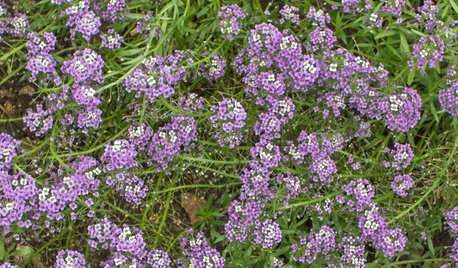
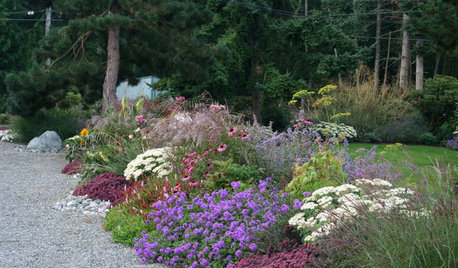

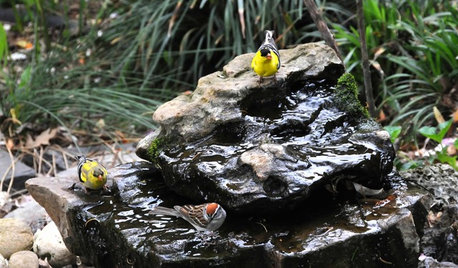

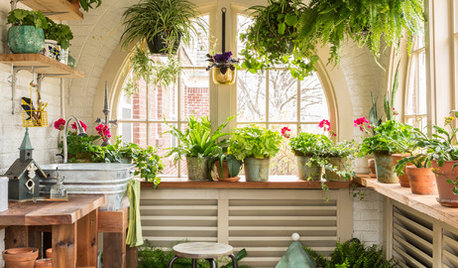

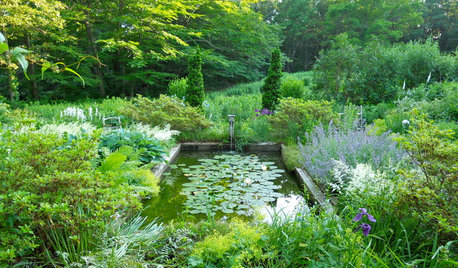

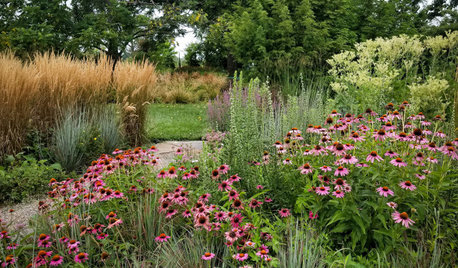


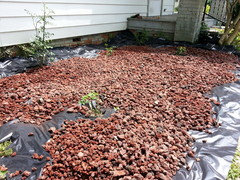
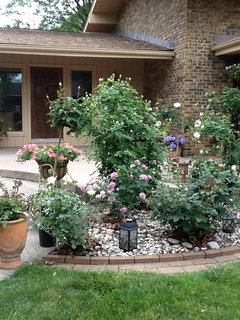
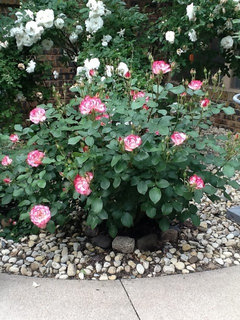


susan4952